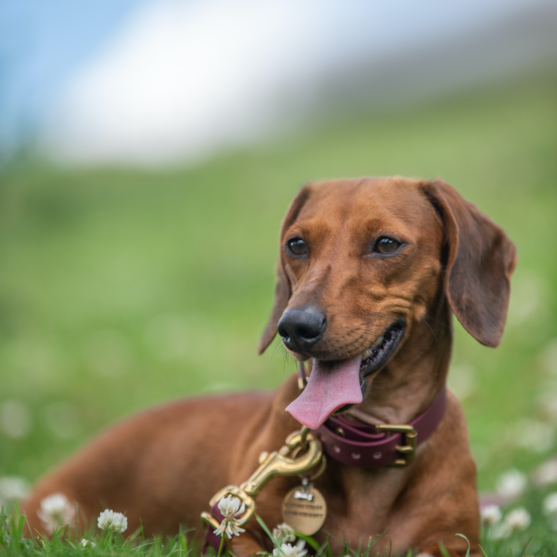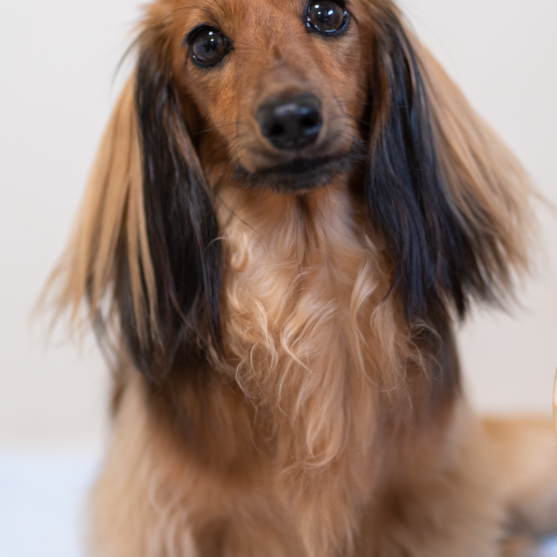Dachshund Breed Info


The delightful Dachshund is a breed that never fails to make an impression. Boasting a distinctive silhouette, this little dog packs a big personality into a small package. Dachshunds are skilled hunters with a keen sense of smell, but their versatility extends to their role as affectionate and spirited family pets. They come in a variety of sizes and coat types, ensuring there's a Dachshund suited for every household and climate.
Dachshunds are sensitive dogs, capable of picking up on their owner's emotions and reacting accordingly. They can be empathetic and supportive, providing comfort and companionship when needed. This emotional intelligence also means that they respond best to gentle, positive reinforcement during training, as harsh methods can be counterproductive and cause distress.
Characteristics
- Bold: Dachshunds have a fearless disposition, often displaying a level of courage that belies their small size.
- Faithful: These dogs develop strong attachments to their owners, providing unwavering companionship and loyalty.
- Spirited: Dachshunds possess a lively and energetic personality, making them entertaining and endearing pets.
- Quick-witted: Their intelligence is impressive, but it can sometimes lead to training challenges if not properly channeled.
- Headstrong: Dachshunds are known for their strong-willed nature, which may require patience and consistency during training.
- Caring: This breed is renowned for its gentle and loving nature, forming deep emotional bonds with its family members.
- Observant: Dachshunds are highly attentive to their environment and make excellent watchdogs, ready to alert their owners to any potential concerns.
- Flexible: They have the ability to thrive in various living situations, making them a great fit for a wide range of households.

Appearance
One of the most striking features of the dachshund is their low-slung body, which is accompanied by stubby yet powerful legs. This one-of-a-kind body structure is a testament to the breed's original purpose as a fearless hunter, adept at navigating tight spaces in pursuit of prey. The combination of a robust spine and well-muscled limbs provide the dachshund with the strength and flexibility required for their original hunting tasks.
Dachshunds are classified into two main size categories: standard and miniature. While standard dachshunds generally weigh between 16 and 32 pounds, their miniature counterparts are smaller, weighing 11 pounds or less. Both size variations, however, share the hallmark elongated body and short-legged appearance that has become synonymous with the breed.
In addition to size variations, dachshunds also showcase a diversity of coat types, including smooth, wirehaired, and longhaired varieties. The smooth coat is characterized by a short, glossy texture, the wirehaired coat boasts a thick, wiry feel with distinct facial hair, and the longhaired coat features an elegant, flowing, and slightly wavy appearance.
The dachshund's coat can be found in a multitude of colors and patterns, ranging from solid hues like red and cream to bi-color combinations such as black, chocolate, wild boar, or fawn paired with tan or cream markings. Furthermore, dapple, brindle, and piebald patterns offer even greater diversity in the breed's appearance.
The dachshund's facial features, including their expressive eyes and floppy ears, contribute to their overall charm and irresistible appeal. The combination of these various physical attributes results in a breed that is not only visually distinctive but also deeply cherished by dog enthusiasts across the globe.
Temperament
Dachshunds are well-known for their iconic body shape and lively disposition, but there's more to their character than meets the eye.
While dachshunds have a reputation for being strong-willed, they are also highly adaptable dogs. They can adjust well to various living situations, making them suitable for both city apartments and country homes. Their versatility is evident in the range of activities they can participate in, from casual walks to more demanding sports like earthdog trials and scent work.
One of the lesser-known aspects of the dachshund's personality is their keen sense of humor. They are known for their playful antics and can be quite entertaining with their quirky behaviors. Dachshunds enjoy engaging with their owners, whether through games or simply making them laugh with their amusing actions.
Dachshunds are alert and watchful dogs, always aware of their surroundings. This makes them excellent watchdogs, as they are quick to notify their owners of any unusual occurrences or potential threats. Their small size and keen senses help them excel in this role, making them ideal companions for those who appreciate a vigilant and loyal pet.
Care
Grooming
As the proud owner of a dachshund, you know that these adorable dogs have a distinctive look and personality. To keep your dachshund looking and feeling their best, it's important to understand their specific grooming needs. In this article, we will discuss the key aspects of dachshund grooming, such as coat care, bathing routine, ear cleaning, and nail maintenance.
Dachshunds come in three coat varieties: smooth, longhaired, and wirehaired. Each type requires a tailored grooming approach. For smooth-coated dachshunds, a gentle brushing with a soft-bristle brush or grooming glove once a week will help remove loose fur and dirt. Longhaired dachshunds need more frequent brushing, about two to three times per week, with a pin brush or slicker brush to avoid matting and tangles. Wirehaired dachshunds should be brushed weekly using a slicker brush, and their coat requires hand stripping every few months to maintain its proper texture.
To keep your dachshund's coat clean and fresh, it's recommended to bathe them every four to six weeks using a gentle dog shampoo. Be careful to prevent water from entering their ears or eyes while bathing. Thoroughly rinse out the shampoo to avoid any skin irritation. For wirehaired dachshunds, it's advisable to bathe them beforehand stripping to make the process easier.
Proper nail care is vital for dachshunds, as untrimmed nails can cause discomfort and contribute to joint issues. Trim your dachshund's nails every three to four weeks using dog nail clippers or a grinder. If you're uncertain about the correct method, seek advice from a professional groomer or your veterinarian.
Exercise Needs
When planning your Dachshund's exercise routine, consider different activities that will not only satisfy their energy levels but also provide mental stimulation.
Introduce agility exercises at a moderate pace, such as weaving through poles or going through tunnels, to help your Dachshund develop coordination and focus. While they may not compete at a professional level, practicing these skills can be a fun and engaging way to keep them active.
To strengthen the bond between you and your Dachshund, try incorporating some basic obedience training into their daily routine. This not only helps them burn energy but also sharpens their mind and encourages good behavior.
When walking your Dachshund, vary your routes and explore new environments to keep them curious and engaged. This allows them to experience different scents, sights, and sounds, which can be mentally stimulating.
Don't forget that Dachshunds have a unique body shape, which makes them prone to back issues. Choose low-impact exercises and avoid activities that require jumping or twisting. Always monitor your pet for signs of discomfort and adjust their routine accordingly.
By incorporating diverse exercises and activities into your Dachshund's routine, you can cater to their energetic nature while considering their unique build. This will help ensure a healthy and happy dog that is both physically and mentally engaged.
Health
Dachshunds are a lovable and unique breed, but they do have some potential health concerns owners should be aware of. Obesity is a common problem among Dachshunds, as their short legs and long bodies can lead to weight gain. A balanced diet and regular exercise routine are crucial in maintaining a healthy weight and preventing obesity-related health issues.
Dental issues are also a concern for Dachshunds, and owners should practice regular teeth brushing and schedule dental check-ups to prevent periodontal disease and other dental problems.
As Dachshunds age, they are also at risk for eye problems such as cataracts and progressive retinal atrophy, which can lead to vision loss. Regular eye check-ups with a veterinarian can help detect and manage these issues.
Finally, due to their unique body structure, Dachshunds are predisposed to spinal problems, including intervertebral disc disease (IVDD). Preventative measures such as regular vet check-ups, weight management, and low-impact exercise can help minimize the risk of spinal complications and ensure the well-being of your Dachshund.
Lifespan
Dachshunds are a loyal and playful breed that can live a long and healthy life with their owners. On average, they enjoy a lifespan of 12-16 years, but some Dachshunds have even lived well into their 20s. In fact, the oldest recorded Dachshund ever was named Chanel, who lived to the ripe old age of 21 years and 114 days.
To ensure your Dachshund enjoys a long and healthy life, it's essential to provide them with proper care, attention, and affection. This includes regular veterinary check-ups, a healthy diet, and plenty of exercise. By giving your furry friend the love and attention they deserve, you can help them thrive and continue to bring joy to your life for many years to come.
Training
Dachshunds are known for their intelligence and their ability to learn quickly, making them a breed that can excel in obedience training. Starting training during early puppyhood can help capitalize on this intelligence and set your Dachshund up for success.
One of the key advantages of Dachshunds is their ability to quickly pick up new commands and behaviors. They thrive on mental stimulation, and training is an excellent way to provide that stimulation. By starting training early, you can take advantage of their intelligence and create a happy, well-behaved companion that is a joy to be around.
Positive reinforcement is one of the most effective training methods for Dachshunds. Praising and rewarding good behavior can encourage your dog to continue to exhibit that behavior. It's important to avoid harsh or negative training methods, as this can discourage your Dachshund and make training more difficult.
Consistency is also important when training a Dachshund. Establishing clear rules and boundaries and enforcing them consistently can help your dog understand what is expected of them. This can help create a sense of structure and predictability, which can make training easier and more effective.
History
The dachshund, affectionately known as the "wiener dog" or "sausage dog," has a rich and intriguing history that dates back hundreds of years. Famous for their elongated bodies, short legs, and fearless personalities, these unique dogs have won the hearts of dog enthusiasts all over the world.
Although the exact origins of the dachshund are shrouded in mystery, it is widely believed that their history can be traced back to ancient Egypt. Archaeologists have discovered engravings and sculptures depicting dogs with short legs and elongated bodies, resembling the modern dachshund. These ancient dogs were likely used for hunting and tracking small game, much like their descendants today.
The dachshund as we know it today, however, was primarily developed in Germany during the 15th and 16th centuries. The breed was selectively bred for its unique body shape and incredible hunting skills, specifically for hunting badgers. In fact, the name "dachshund" translates to "badger dog" in German, as "Dachs" means badger and "Hund" means dog.
Dachshunds were bred in two sizes – the standard size for hunting badgers and the smaller miniature size for hunting rabbits and other small game. Their long bodies and short legs allowed them to dig and maneuver through tunnels to chase after their prey, while their fearless temperament made them relentless hunters.
In the 19th century, the dachshund's popularity began to grow beyond Germany. The breed was introduced to the United States and the United Kingdom, where they were admired for both their hunting abilities and their unique appearance. Queen Victoria of England was particularly fond of the breed, which further increased their popularity among the British public.
By the early 20th century, the dachshund had become a popular show dog and family pet. The breed was recognized by the American Kennel Club (AKC) in 1885, and the first Dachshund Club of America was established in 1895.
Today, dachshunds are cherished as loving and devoted family pets, and their popularity continues to grow. They are ranked as the 12th most popular dog breed in the United States by the AKC. Although they are no longer primarily used for hunting, their innate instincts and keen sense of smell make them excellent scent hounds and earthdog trial participants.
Dachshunds are also well-known for their unique appearance, which has led to their frequent portrayal in popular culture. From commercials and movies to books and cartoons, these charming dogs have captured the imagination of the public and solidified their place in history.

